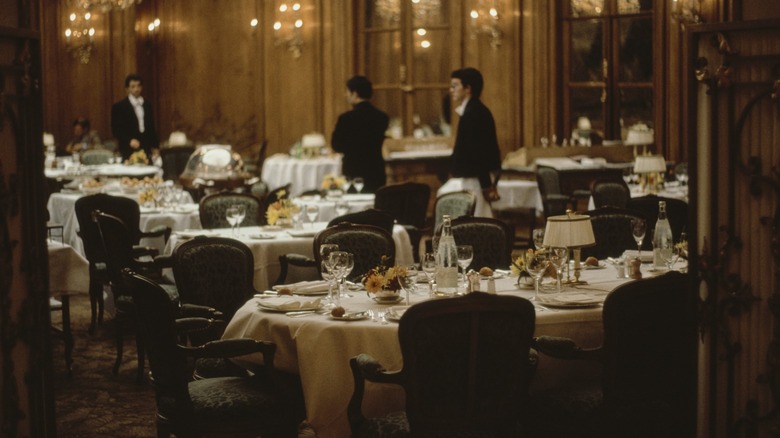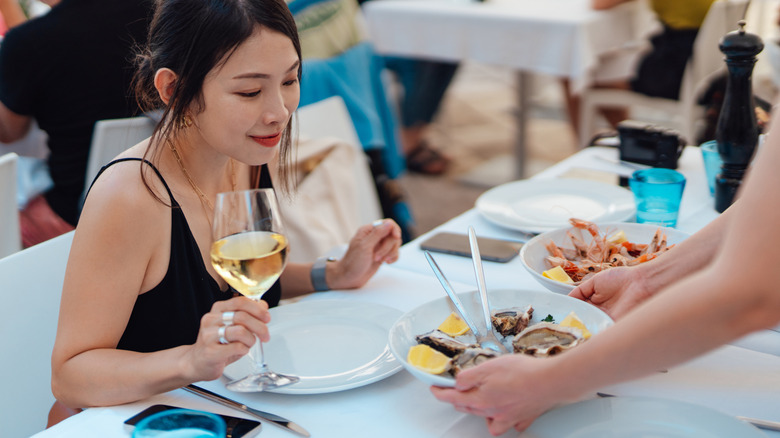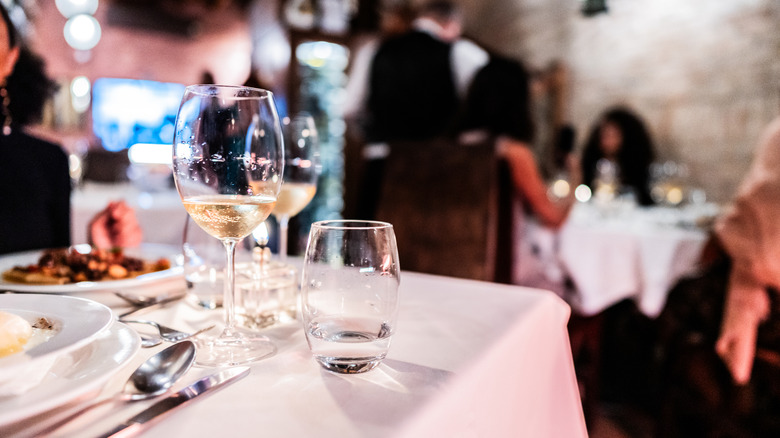What Tourists Should Know Before Dining At A Fancy Restaurant In France, Per Rick Steves
America's favorite travel expert is a big fan of experiencing Europe without breaking the bank. He's full of affordable travel tips (think budget-friendly camping in Europe), but that doesn't mean he won't treat himself every now and then. Rick Steves, a bestselling travel guidebook author, television host, and European travel aficionado has been visiting the continent since he was a teenager back in 1969. He continues to spend about four months out of the year in Europe and hosts around 30,000 travelers on his annual group tours. He's admittedly enjoyed splurging on a few luxurious meals throughout his career.
While he's a great source for genius budget meal tips during your European travels and believes a "good picnic is the answer to a prayer," he also has some great advice to share when it comes to dining in fancy restaurants. According to Steves, France is one of the best countries to splurge on a great meal, and he encourages tourists not to be intimidated when dining out in France. In an article posted on his website, he shares some of his best tips to help prepare travelers for a formal French dinner. As long as you know what to expect, you're sure to have a wonderful experience.
Ordering food in France
According to Rick Steves, French restaurants are an amazing place to enjoy an unforgettable gastronomic experience. He calls them "a spa for your taste buds," adding, "I can enthusiastically embrace a long, drawn-out dinner splurge as a wonderful investment of both time and money. Nowhere is this truer than in France. I can't wait to get back there for another blowout dinner."
He urges travelers to not miss out on the experience, even if they're feeling a little overwhelmed by the language barrier. Most restaurant staff members speak great English. France is a popular destination, and tourists are common, especially in places like Paris. The first step to ensuring your dinner is enjoyable is understanding how to order off a French menu. There are two ways to order, according to Steves. You can opt for a multi-course prix fixe meal or order a la carte. "A la carte" means "according to the menu." This can be a little confusing for tourists, because the prix fixe meals are called "le menu," according to Steves. Ordering the fixed-price multi-course meal is a great way to save money when enjoying a fancy dinner in France.
Before you go, make sure to read up on some basic French etiquette to avoid drawing extra attention to yourself. There are some common requests in American restaurants that can be seen as offensive in France.
Take your time and savor the experience
Some of the most common complaints from American tourists is that French service is slow and servers are rude. The stereotype is often reinforced in movies and on television. Steves reminds us that French servers might be more professional and less "chummy" than American travelers are used to. Don't be offended, it's usually just a cultural difference. Understand that in the United States, servers make their money through tips, so there is often more urgency to turn tables quickly. If you're used to dining out in countries with tip-based wages, you're probably used to food arriving quickly, eating quickly, and then going on your merry way. In France, enjoying a meal at a restaurant is an experience to be savored. Most French restaurants pay their employees a living wage, so servers aren't dependent on tips. Your bill will automatically include a 15% service charge, and servers aren't in any rush for you to finish your meal.
"In France, slow service is good service," Steves writes. "In France your server will not bring your bill until you ask for it. When I'm in a rush, here's my strategy: When I'm done with dessert, and the waiter asks if I'd like some coffee, I use it as the perfect opening to ask for the bill."
Save your fancy French dinner out for a time when you won't need to rush off to the next activity. Relax, slow down, and rejoice in each and every delicious bite. Think of your meal as a culinary adventure. "I can't imagine a richer travel experience, one that brings together an unforgettable ensemble of local ingredients, culture, pride, and people," says Steves.


